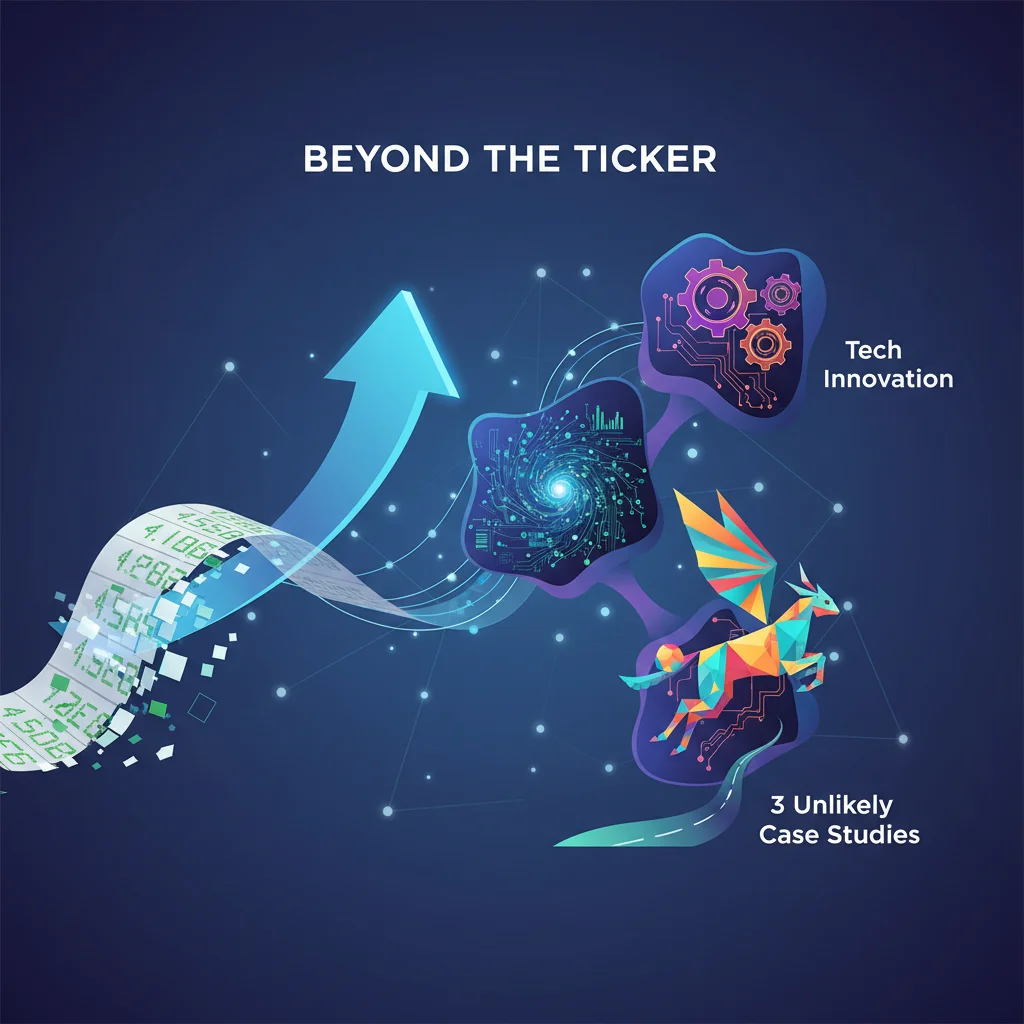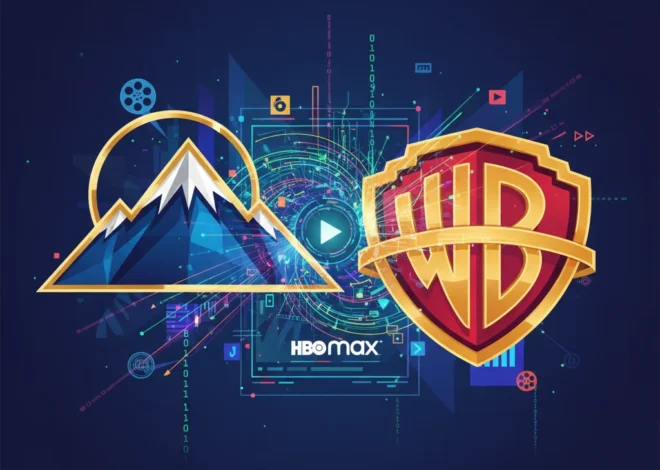
Beyond the Ticker: 3 Unlikely Case Studies on Tech Innovation & Market Trends
In the fast-paced world of tech, it’s easy to get tunnel vision. We focus on the latest funding rounds, the newest programming frameworks, and the unicorn startups dominating the headlines. But sometimes, the most profound lessons about business strategy, digital transformation, and the true value of innovation come from unexpected places.
We’re going to deconstruct the recent analysis of three seemingly unrelated UK companies from the Financial Times’ Stockpickers column: Softcat, a tech reseller; Whitbread, a hotel operator; and Bloomsbury, a book publisher. Forget stock tips—we’re treating these companies as living case studies. For developers, entrepreneurs, and tech leaders, their stories offer a masterclass in market positioning, the pervasive power of software, and the challenges of valuation in an AI-driven world.
Let’s dive in and see what a cloud specialist, a hotel giant, and the publisher of Harry Potter can teach us about building resilient, innovative businesses today.
Softcat: The Enduring Power of the Tech Middleman
At first glance, a company like Softcat might seem like a relic. In an era where you can spin up a server on AWS or subscribe to a SaaS platform with a credit card, what’s the role of an IT reseller and services provider? As it turns out, a very profitable one.
Softcat doesn’t build the tech; it curates, integrates, and manages it for thousands of businesses. Think of them as the expert guides in the sprawling, complex jungle of modern IT. They help companies navigate everything from public cloud infrastructure and cybersecurity defenses to licensing enterprise software. Their success is built on a simple premise: as technology gets more powerful and more fragmented, the need for expert integration and management grows, not shrinks.
The FT notes that Softcat has seen “strong demand” and is a “highly cash-generative” business (source). This isn’t just a fluke; it’s a direct reflection of major industry trends. Companies are desperate to harness the power of artificial intelligence and automation, but often lack the in-house expertise to implement these solutions securely and efficiently. Softcat fills that gap.
The Takeaway for Tech Professionals & Startups
Softcat’s model holds a crucial lesson: value isn’t just in creation, but also in curation and integration. For developers, this highlights the growing demand for skills in DevOps, MLOps, and security engineering—the disciplines that stitch disparate systems together. For startups, it’s a reminder that you don’t have to build the next foundational AI model to create a massive business. Building “last-mile” services, integration platforms, or expert consultancies on top of major ecosystems (like AWS, Azure, or Salesforce) is an incredibly viable path.
However, the FT’s “Hold” recommendation comes with a warning. Softcat’s high valuation suggests the market has already priced in this success. This is the classic innovator’s dilemma: when you’re doing everything right, expectations can soar to a point where even great performance isn’t enough. For any growing tech company, managing market expectations is as critical as managing your product roadmap.
The Chip War Just Shifted Gears: Why Your Next Car is on the Geopolitical Frontline
Whitbread: Tech-Fueled Resilience in the Physical World
Next up is Whitbread, the parent company of the UK’s largest hotel chain, Premier Inn. What can a hotel company possibly teach a tech audience? A lot, actually, about how technology creates competitive moats in even the most traditional industries.
The FT’s “Buy” recommendation is based on a recovery in business travel and the company’s strong financial position (source). But beneath the surface, Whitbread’s success is a story of operational excellence powered by technology. Consider their operations:
- Dynamic Pricing: Room prices are constantly adjusted based on demand, local events, and competitor pricing—a classic application of data analysis and potentially machine learning algorithms.
- Logistics & Supply Chain: Managing housekeeping, food and beverage, and maintenance across hundreds of locations is a massive logistics puzzle solved with sophisticated management software.
- Customer Experience: Seamless online booking, loyalty programs, and digital check-ins are no longer perks; they are baseline expectations driven by technology.
Whitbread isn’t a tech company, but it’s a tech-enabled company. It uses technology not as its product, but as its engine for efficiency, scale, and customer satisfaction. This operational leverage allows it to maintain high occupancy rates and consistent service, creating a brand that customers trust. The resurgence of business travel also hints at the future of work—a hybrid model where face-to-face meetings remain essential, creating opportunities for tech that serves the “digital nomad” or the modern business traveler.
The Takeaway for Tech Professionals & Startups
The lesson here is about applying technology to solve real-world, non-digital problems. For developers, this is a call to look beyond pure-play tech and consider the immense challenges and opportunities in sectors like hospitality, logistics, and construction. The programming challenges in optimizing a hotel’s supply chain can be just as complex and rewarding as building a new social media app.
For entrepreneurs, Whitbread is a case study in building a durable business. While VCs chase exponential growth in SaaS, there’s immense value in building technology that provides incremental but powerful efficiency gains in established industries. This is where automation and pragmatic AI can have the biggest impact.
Caught in the Crossfire: Why Europe's Tech Future is Hostage to the US-China Mineral War
Bloomsbury Publishing: The SaaS-ification of Content
Finally, we have Bloomsbury Publishing. Famous for bringing Harry Potter to the world, the company could easily be dismissed as a “hits-driven” business at the mercy of fickle consumer tastes. But that would miss the most exciting part of their story: a deliberate and successful pivot towards a digital, recurring-revenue model.
The FT highlights the strength of Bloomsbury’s academic and professional division, which now provides a significant and stable revenue stream (source). This division doesn’t just sell e-books; it sells subscriptions to vast digital libraries and research platforms. In other words, Bloomsbury is transforming a part of its business into a SaaS company.
This is a profound example of digital innovation. They’ve taken their core asset—a deep archive of high-value content—and repackaged it for the digital age. This strategy decouples their revenue from individual book sales and creates a predictable, scalable business model that is far more attractive to investors. This is the “SaaS-ification” of content, and it’s a playbook being used across media, education, and entertainment.
The Takeaway for Tech Professionals & Startups
Bloomsbury’s journey offers a roadmap for any company sitting on a valuable proprietary dataset or content library. The future is not just about creating new content, but about building platforms that allow users to interact with, search, and analyze that content in novel ways. This is where artificial intelligence and machine learning become game-changers. Imagine AI-powered research assistants for students using Bloomsbury’s platform, or ML algorithms that identify emerging academic trends from their archives.
The FT’s “Hold” recommendation reflects the tension in this transition. The market loves the stability of the digital division but remains wary of the volatile consumer side. For any established company undergoing a digital transformation, this is the key challenge: running two different business models at once. It requires patience, investment, and a clear vision for how the new model will eventually become the company’s core.
Synthesizing the Lessons: A Comparative Look
To tie this all together, let’s look at these three companies side-by-side. Each represents a different archetype of technology’s role in the modern economy.
| Company | Business Model Archetype | Key Tech Angle | Takeaway for Tech Innovators |
|---|---|---|---|
| Softcat | Pure-Play Tech Integrator | Curation and management of complex tech stacks (Cloud, Cybersecurity) | Value lies in simplifying complexity. Building the “plumbing” is as valuable as inventing new tech. |
| Whitbread | Tech-Enabled Traditional Business | Using software and data for operational excellence (pricing, logistics) | Huge opportunities exist in applying tech to optimize physical-world industries. |
| Bloomsbury | Legacy Business in Digital Transformation | Pivoting from one-off sales to a recurring revenue SaaS model for content | Monetize proprietary data/content by building platforms, not just selling products. |
Is the AI Boom a High-Tech Cargo Cult?
Conclusion: Reading the Signals
Looking at the market through the lens of a tech professional rather than an investor yields a different kind of alpha. Softcat, Whitbread, and Bloomsbury aren’t just tickers on a screen; they are indicators of deep, structural shifts in the economy. They show us that the demand for tech integration is booming, that operational efficiency driven by software creates durable competitive advantages, and that even the most traditional businesses can find new life by embracing a SaaS mindset.
For those of us building the future of technology, these lessons are invaluable. They challenge us to think beyond the hype, to see the opportunities for innovation in unexpected places, and to understand that the most successful companies aren’t always the ones with the newest invention, but the ones that most effectively use technology to solve a fundamental customer or business problem.


